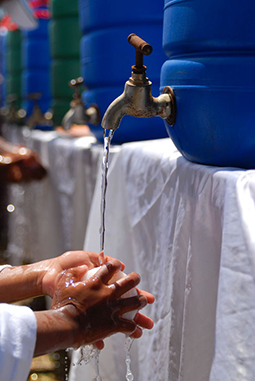15.1 The importance of monitoring and evaluation
Assume that you are managing a ‘handwashing with soap after visiting latrine’ campaign in your community. How do you make sure that the activities of the campaign are on track? How do you know that the necessary products (e.g. soap) and services (e.g. water) are available during the campaign? How would you know at the end of the campaign that community members are definitely washing their hands with soap after visiting a latrine (Figure 15.1)?

Monitoring and evaluation are ways of systematically measuring and assessing programme activities and results. Their purpose is to check on the progress of implementation and outputs systematically. They help to determine when a programme is going to plan and when changes may be needed. They form the basis for modification of interventions, and of assessing the quality of any activities that are being conducted. Moreover, with a positive outcome, they can be used to demonstrate that programmes have been implemented effectively and have had a measureable impact.
Together, monitoring and evaluation (frequently abbreviated to M&E) provide the necessary data to guide planning, to allocate resources, to design and implement programmes and projects and, if necessary, to re-allocate resources in better ways. They are essential in providing planners, implementers, policy makers and donors with the information and understanding they need to make informed decisions about the operation of their programmes.
Although often referred to together as M&E, monitoring and evaluation are two different but linked processes that apply to many projects, programmes and other interventions. (Note that in following sections, we have used ‘projects’ to include all types of activity that would need M&E.)
Learning Outcomes for Study Session 15
